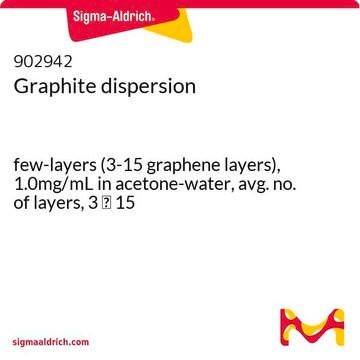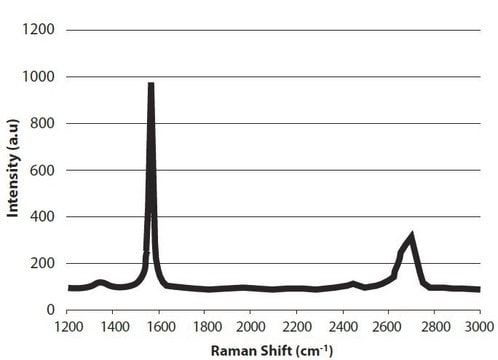803839
Graphene dispersion
10 mg/mL,dispersion in NMP
About This Item
Polecane produkty
product name
Graphene dispersion, 10 mg/mL, dispersion in NMP
Postać
dispersion (in NMP)
skład
Graphene, 1 wt. %
NMP, 99 wt. %
stężenie
10 mg/mL
opór arkusza
<103 Ω/sq (graphene)
grubość
1-10 nm , graphene
temp. przechowywania
2-8°C
Opis ogólny
No any surfactants or stabilizers exist on the graphene surface.
Zastosowanie
- Graphene-based composites
- Sensors
- Biomedicines
- Nanodevices
Hasło ostrzegawcze
Danger
Zwroty wskazujące rodzaj zagrożenia
Zwroty wskazujące środki ostrożności
Klasyfikacja zagrożeń
Eye Irrit. 2 - Repr. 1B - Skin Irrit. 2 - STOT SE 3
Organy docelowe
Respiratory system
Kod klasy składowania
6.1C - Combustible acute toxic Cat.3 / toxic compounds or compounds which causing chronic effects
Klasa zagrożenia wodnego (WGK)
WGK 1
Temperatura zapłonu (°F)
195.8 °F
Temperatura zapłonu (°C)
91 °C
Certyfikaty analizy (CoA)
Poszukaj Certyfikaty analizy (CoA), wpisując numer partii/serii produktów. Numery serii i partii można znaleźć na etykiecie produktu po słowach „seria” lub „partia”.
Masz już ten produkt?
Dokumenty związane z niedawno zakupionymi produktami zostały zamieszczone w Bibliotece dokumentów.
Klienci oglądali również te produkty
Produkty
Graphene is a unique two-dimensional (2D) structure of monolayer carbon atoms packed into a dense honeycomb crystal that has attracted great interest due to its diverse and fascinating properties.
Since its discovery little more than a decade ago,1 the two-dimensional (2D) allotrope of carbon—graphene—has been the subject of intense multidisciplinary research efforts.
Catalytic water splitting produces hydrogen crucial for renewable energy, petroleum refining, and chemical industry applications like methanol production.
Advances in scalable synthesis and processing of two-dimensional materials
Nasz zespół naukowców ma doświadczenie we wszystkich obszarach badań, w tym w naukach przyrodniczych, materiałoznawstwie, syntezie chemicznej, chromatografii, analityce i wielu innych dziedzinach.
Skontaktuj się z zespołem ds. pomocy technicznej










